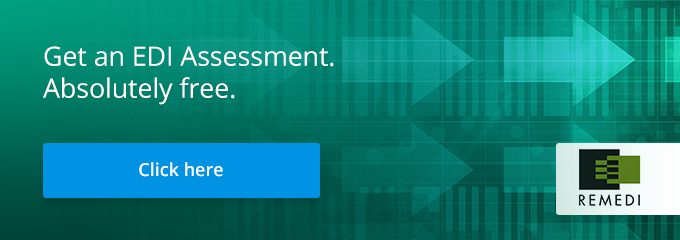
You have invested a great deal of time and money in your EDI system, but now, you are hearing that blockchain is going to replace EDI completely. You are confused, irritated, and worried. Questions swirl around you, such as, “Will I have to replace my investment, is EDI dead? How does blockchain work, and can it work with EDI?”
Recently, IBM held a webinar that addressed some of these questions. Read on to learn how IBM sees the future of blockchain and EDI.
Is EDI Dead?
Chris Hayes, Product Marketing Manager, IBM Watson Supply Chain, and Todd Margo, Offering Manager, Ecosystem; Innovation, IBM Watson Supply Chain, started off the webinar by emphatically stating that EDI is far from dead.
Hayes noted that blockchain isn’t the first new technology to come around that poses an ostensible threat to EDI. “We’ve been here before,” he observed. That being said, blockchain is transformational; Hayes pointed out that it is disintermediating banks in some parts of the world.
“Rumors of EDI’s death have been exaggerated.”
Thus, blockchain cannot be dismissed out of hand. Margo stated that blockchain is simply the latest in a line of technologies that have had an impact on EDI over the past few decades, including the Internet, XML, and APIs. Blockchain will not replace EDI. Rather, it could replace certain forms of point-to-point integration.
Margo noted that there is a constant evolution toward real-time B2B integration. The technology that has attempted to enable this has not been, as he called it, “a grand simplification.” Instead, it has been additive, creating challenges for users.
What Will the Future Look Like?
Hayes remarked that blockchain has value to add when it comes to solving problems within businesses that existing technology has not been able to fix. He believes blockchain will extend EDI rather than replacing it completely.
Margo and Hayes provided use cases for blockchain within the supply chain. Margo stated that there are blockchain projects underway today that will have a significant impact on the way the world does business, and these projects are sponsored by consortia of large companies. Two areas in which you will see these large blockchain projects are global trade and food safety.
“Blockchain can add value because it can solve problems for businesses that existing technology cannot.”
However, blockchain does not have to be just for big companies to tackle equally large problems. Margo noted that there are smaller projects involving shared ledgers. Blockchain will serve as a technical underpinning to IBM’s network, and customers will gain experience with blockchain without having to change what they are doing now.
Blockchain can work with your existing systems and extend what you are doing with EDI, Hayes explained. For example, the IBM Supply Chain Shared Ledger allows all parties to see selected messages. There is a shared, singular, immutable version of events, and collaborative apps are built on top of the platform.
“Shared ledgers create a singular, immutable, shared version of events, enhancing collaboration between partners.”
The bottom line is that blockchain is not going to replace EDI. On the contrary, the two technologies can work together to enhance collaboration in the supply chain.
Want to learn more about taking advantage of available technologies to enhance your EDI environment today? Get an EDI Assessment. Absolutely free.



